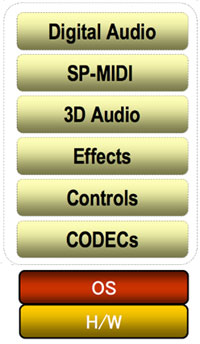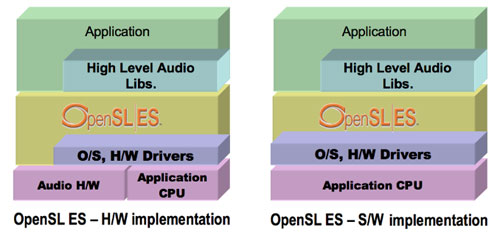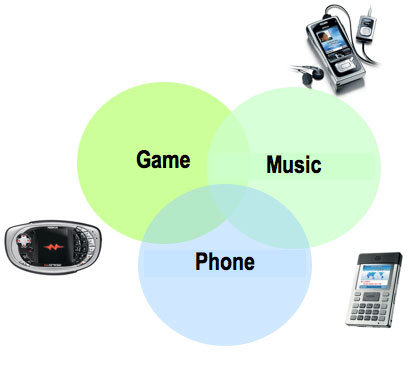OpenSL ES Adopters ONLY - The Standard for Embedded Audio Acceleration
OpenSL ES™ is a royalty-free, cross-platform, hardware-accelerated audio API tuned for embedded systems. It provides a standardized, high-performance, low-latency method to access audio functionality for developers of native applications on embedded mobile multimedia devices, enabling straightforward cross-platform deployment of hardware and software audio capabilities, reducing implementation effort, and promoting the market for advanced audio.
OpenSL ES 1.1 at a glance
- The OpenSL ES 1.1 specification and header files are available in the Khronos Registry
- The OpenSL ES 1.1 Quick Reference card.
OpenSL ES 1.0.1 at a glance
The OpenSL ES 1.0.1 specification and header files are available in the Khronos Registry
The need for OpenSL ES
Currently the market offers a diversified range of multimedia devices and fragmentation in the developer space is high. Application developers are constantly porting their audio source code across several proprietary APIs. Just playing a simple sound on different platforms requires different code. OpenSL ES addresses the limitations of platform and provides additional tangible benefits:

Features of OpenSL ES
- Royalty-free, open audio application API for embedded mobile multimedia devices
- Suitable for both hardware and software implementations
- Application-oriented "developer" API that standardizes access to advanced audio functionality:
- Mandated audio format across platforms providing consistency for developers, with support for optional formats
- Interactive music and ringtones using SP-MIDI, Mobile DLS, Mobile XMF
- 3D positional audio provided for gaming using OpenGL ES
- Cross-platform foundation for a wide range of higher-level audio APIs including: Mobile Media API (JSR-135); Advanced Multimedia Supplements (JSR-234)
- Extensible to handle new capabilities
- Profiles (subset of features satisfying typical use cases for a given market segment) will allow market segement targeting
Target Applications
|
Target Devices
Target devices minimum requirements: 8MB of RAM; 100MHz embedded processor(s) ; Handheld form factor, supports applications; Audio output via speaker(s), headset/headphone; Networking support for streaming: wireless, Bluetooth; |

Profiles
OpenSL ES will be deployed on a wide range of devices catering to different market segments. The profiles are: Phone, Music and Game.
Game Profile
Targeted at the game-centric mobile device market : Advanced MIDI functionality, sophisticated audio capabilities such as 3D audio, audio effects, ability to handle buffers of audio, etc
Music Profile
Targeted at the music-centric mobile device market - High quality audio, ability to support multiple music audio codecs, audio streaming support
Phone Profile
Targeted at the basic mobile phone market - Includes ringtone and alert tone playback (i.e. basic MIDI functionality), basic audio playback and record functionality, and simple 2D audio games.

